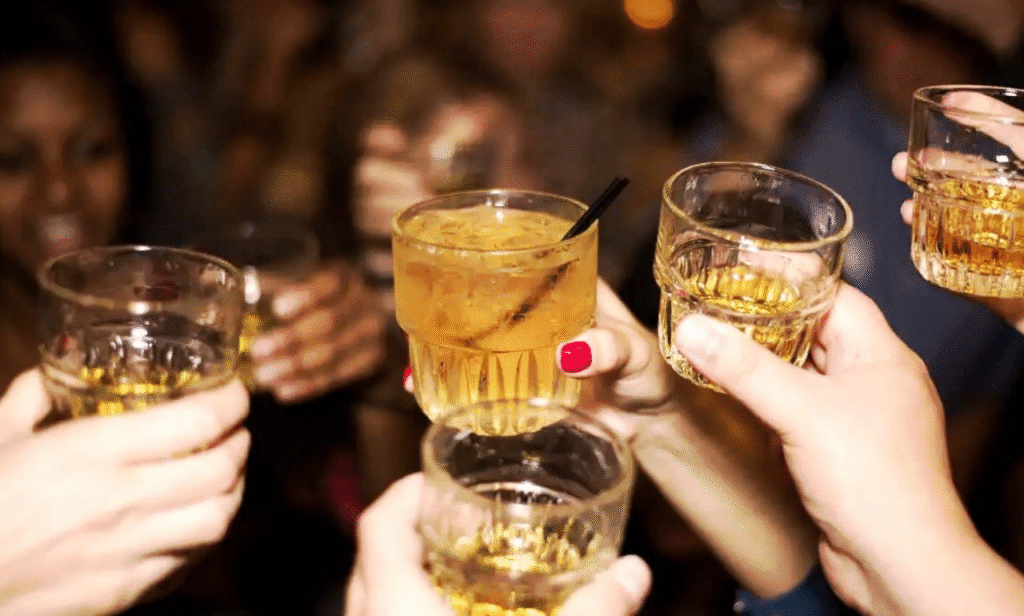
America’s drinking habits are undergoing a profound transformation. A recent Gallup survey has revealed that just 54 percent of U.S. adults now report drinking alcohol—marking the lowest figure since the poll began nearly nine decades ago. This shift represents a watershed moment, as past data consistently showed at least 60 percent drinking from 1997 through 2023, but now that number has plunged to historic depths—58 percent in 2024 and now a staggering 54 percent in 2025.
This decline isn’t limited to drinkers disappearing overnight. The frequency and amount of consumption have also tapered significantly. Only 24 percent of those surveyed said they had a drink in the past 24 hours—another record low. Meanwhile, 40 percent said it had been over a week since their last drink, and the average weekly consumption across all drinkers now stands at just 2.8 drinks—the lowest level recorded since 1996.
What’s driving this retreat from alcohol? A growing belief—held by 53 percent of Americans—that even moderate drinking (“one or two drinks a day”) is harmful to health. That’s up sharply from roughly 28 percent in 2015. For the first time, a majority now considers moderate drinking risky, reflecting a seismic shift in public attitude.
This groundswell of skepticism aligns with recent scientific reassessments. Earlier research suggesting that moderate wine consumption carried heart-protective benefits has been revisited—and largely discredited—by newer studies that link alcohol to cancer and other serious health risks. Organizations like the WHO now emphasize that there is no safe level of alcohol consumption.
Younger generations are at the vanguard of this change. Among Gen Z and younger millennials, the decline in drinking has been particularly pronounced. Nearly two-thirds of 18- to 34-year-olds now believe that moderate drinking is unhealthy; about half now abstain from alcohol—a marked increase from just 41 percent last year.
This generational shift is reshaping social norms. Gen Z frequently opts for lattes, mocktails, wellness beverages, or non-alcoholic options rather than toast to “happy hour.” Now, more than 60 percent of Gen Z prefer non-alcoholic drinks in social settings. Only 39 percent consider alcohol their go-to social beverage—compared to 57 percent of Gen X. Their preferences reflect function, mood, gut health, and purpose.
Alongside this, many young professionals in environments like Silicon Valley are choosing sobriety as a productivity tool. Emerging startup founders are embracing “San Francisco-sober”—abstaining entirely in the Valley while perhaps drinking elsewhere. They cite health, focus, and performance as motivators. Tech ecosystems are adapting: meetings are now “sparkling-water only,” and sober gatherings are gaining social currency.
Still, it’s not just Gen Z leading the charge—women and White adults have also reduced drinking rates significantly. Since 2023, women’s drinking rates have dipped 11 percentage points (to about 51 percent), while men’s rates fell five points (to 57 percent). Among White adults, consumption dropped 11 points. People of color held steady around 50 percent—but collectively, the trend cuts through demographics.
A partisan dimension has likewise emerged. Republican drinking rates have collapsed down to 46 percent—a drop of some 19 points—while Democratic rates stayed near 61 percent. That partisan shift is reshaping how public health messaging may be received and interpreted culturally.
Economics also plays a role. Inflation, tight budgets, and rising interest rates have squeezed discretionary spending—including alcohol. Though some industry insiders point to temporary behavior changes driven by pandemic ripples (among Gen Z delaying alcohol rather than rejecting it), analysts also see profound structural shifts. Nevertheless, beverage companies are responding with premium and lifestyle-aligned products, including additive-free spirits and RTD cocktails, to stay relevant.
Industry is adapting with innovation and marketing that resonates. Ready-to-drink hard seltzers, boutique flavor profiles, and transparency-driven brand messaging increasingly define the new alcohol marketplace—tailored especially to wellness-focused, experience-seeking younger drinkers.
On the other side of the coin, the teetotalism and sober-curious movements are gaining traction. Teetotalism, or total abstinence from alcohol, has been embraced on health, ethical, or religious grounds. In the U.S., a growing share of millennials and Gen Z identify as teetotalers. By 2024, 61 percent of no-alcohol beer consumers were millennials—a jump from 45 percent in 2016.
“Sober curious” goes beyond formal abstinence—it reflects a lifestyle rooted in exploring sober living for wellbeing, not moralizing it. People guided by this philosophy question or limit drinking as a conscious choice to support mental and physical health. Markets have responded with an expanding range of non-alcoholic alternatives.
Public health authorities and policymakers are taking notice. U.S. federal dietary guidelines are under review—alcohol recommendations are expected to be revised in light of this new evidence base and cultural shift.
Taken together, declines in consumption, shifting beliefs, generational value changes, economic stressors, and cultural movements are converging. What once was a society where moderate drinking was common and even seen as beneficial is devolving into a landscape where sobriety, health, and intentionality hold sway.
From a public health perspective, this could be welcome news—fewer drinks, more abstainers, and a majority now viewing alcohol as a detrimental signal meaningful progress in harm reduction.
Yet from a business standpoint, it’s a turning tide. Alcoholic beverage companies face unprecedented challenges—but also opportunities. Investment is flowing into non-alcoholic and low-alcohol categories, premium artisanal spirits, and lifestyle-brand storytelling.
To thrive, companies must stay aligned with evolving attitudes—authenticity, health alignment, cultural relevance, and values matter more than ever. For example, Gen Z responds to brands that mix irony, creative partnerships, and wellness messaging rather than conventional indulgence themes.
Meanwhile, social norms are evolving too—celebrations once defined by clinking glasses can now feature mocktails or sparkling water. The new definition of “fun” might include vitality, mindfulness, and long-term health.
Looking across the demographic spectrum—and especially among the young—one sees a clear progression: from casual drinking to critical questioning to a broader embrace of sobriety or moderation by design.
In short, the drinking narrative in the U.S. is being rewritten. The old story—where moderate drinking was socially expected, and even touted for health—has given way to one defined by skepticism, health awareness, and choice. As more Americans opt out of booze, a sober culture is taking shape.
This transformation doesn’t look like a passing phase. It’s informed by solid data, reinforced by changing values, and embedded in consumer behaviors and industry strategies.
The Gallup numbers make the reality clear: as of July 2025, only 54 percent of U.S. adults drink alcohol—the lowest in decades. For the first time, 53 percent think moderate drinking is harmful to health. Young adults, women, White Americans, Republicans—all have shown significant shifts. Drinking frequency and volume are down sharply.
From Silicon Valley founders abstaining to Gen Z swapping cocktails for wellness drinks, the sober-curious and teetotal movements are reshaping how Americans relate to alcohol.
As health, economics, culture, and science converge, it appears the era of casual drinking may be giving way to a soberer, more intentional America.
